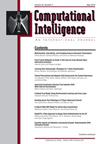Modelling of Nonlinear Oscillator System via Double Loop Radial Basis Function Neural Networks With Adaptive Radius and Lattices
Abstract
As modelling of nonlinear oscillator systems plays an important part in science and engineering fields, a double loop Radial Basis Function Neural Network (RBFNN) with adaptive radius and lattices is proposed for handling this issue. In this design, a large enough lattice arranged to cover all of the trajectories is taken as the mapping center of the RBFNN at the initial condition. The number of lattices will be dynamically adjusted, and those lattices far from the trajectories will be removed. Applying Taylor expansion in local space, the activated radius factor can be separated from the Gaussian function. In order to guarantee that the modelling scheme has the characteristic of fast convergence, the error power function is utilized to minimize the gain parameter of the error differential equation. In the double loop structure, the updated equation of weights and activated radius can be determined by the Lyapunov function, which can guarantee that the weights and the activated radius will converge to the neighborhood of their true value and the tracking error of state trajectories will converge to the neighborhood of zero. In order to show the effectiveness and superiority of the double loop RBFNN proposed in this paper, Helmholtz–Duffing and Vanderpol–Duffing are used as the testing objects of the nonlinear oscillator system while comparing with Deterministic Learning.


 求助内容:
求助内容: 应助结果提醒方式:
应助结果提醒方式:


